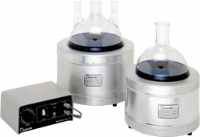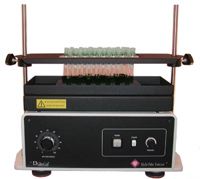| The Home page of ILPI's Safety Data Sheet (SDS) Resource, the leader in SDS information since 1995! | |
| The history and philosophy behind this resource. | |
| A curated collection of books and reference materials concerning Safety Data Sheets and closely related topics. | |
| Paste your plain text SDS into the SDS-Demystifier, and it will be converted into a hypertext-enriched document with links to detailed explanations of each key term. | |
| An extensive list of frequently asked questions about Safety Data Sheets including regulations, content, compliance, and more. | |
| A humorous take on Safety Data Sheet jargon. Fill in the blanks on our entry form to generate a personalized Unsafety Data Sheet to share with your coworkers. | |
| Since 1995, we've maintained this massive curated list of the best places to find Safety Data Sheets on the Internet. | |
| Way more than a glossary, this hypertext-enhanced resource covers hundreds of SDS-related terms and expert knowledge. Each entry includes both the SDS relevance and links to additional authoritative resources. | |
| Archived results of Safety Data Sheet related polls taken by some of our millions of site visitors | |
| You are here! The OSHA regulations behind SDS regulations, including the inspection guidelines and over 400 official interpretations letters under the Hazard Communication Standard | |
| Commercial suppliers of SDS authoring and management software as well as cloud compliance services. | |
| Commercial companies that will create SDS's for your specific needs as well as SDS translation companies. |

Safety signs, banners, and scoreboards? Get yours at Safety Emporium!
| Title:02/05/2004 - Material safety data sheet requirements for experimental chemical mixtures that are shipped off-site. | |
| Record Type: Interpretation | Standard Number: 1910.1200; 1910.1200(b)(3)(iv); 1910.1200(g) |
OSHA requirements are set by statute, standards and regulations. Our interpretation letters explain these requirements and how they apply to particular circumstances, but they cannot create additional employer obligations. This letter constitutes OSHA's interpretation of the requirements discussed. Note that our enforcement guidance may be affected by changes to OSHA rules. Also, from time to time we update our guidance in response to new information. To keep apprised of such developments, you can consult OSHA's website at https://www.osha.gov
February 5, 2004
Kevin Coppola, Ph.D.
437 LSU Avenue
Baton Rouge, Louisiana 70808
Dear Dr. Coppola:
Thank you for your June 30, 2003 letter to the Occupational Safety and Health Administration. Please be aware that this response may not be applicable to any question or scenario not delineated within your original correspondence. You had specific questions regarding material safety data sheets (MSDSs). Your paraphrased statement and questions are below, followed by our response.
Statement: I am a Ph.D. chemist working in a chemical research laboratory. I have been told that OSHA regulations require me to develop MSDSs for newly synthesized chemicals and minor impurities isolated from chemicals. There are only a few grams of these chemicals that exist, they are not commercial, and their chemical identities are unknown. These chemicals are shipped to other laboratories for characterization, testing and analysis, and they are handled exclusively by trained professionals in laboratories that comply with the laboratory standard. I do not believe that developing MSDSs for these chemicals would add to laboratory safety, and I am uncomfortable developing MSDSs for substances for which I am unsure of the chemical identities.
Question 1: Is there an MSDS exemption from the requirements for newly synthesized and uncharacterized chemicals?
Response: OSHA's Hazard Communication Standard (HCS) 29 CFR 1910.1200 requires that manufacturers prepare and transmit MSDSs with the initial shipment of all hazardous chemicals. Research facilities which synthesize or produce chemicals are considered chemical manufacturers, if they ship hazardous chemicals, and must develop MSDSs for the hazardous chemicals that they produce and distribute to other workplaces. While the HCS is based on known information and does not require testing of chemicals in determining health effects, any relevant information which is known about the chemical or the mixture must be conveyed in the MSDS.
While your laboratory may not have information concerning the precise nature of the synthesized chemicals, it is likely that your laboratory has a significant amount of important and relevant information concerning these chemical mixtures. For instance, the newly synthesized chemical would be just one component in a mixture comprised, in part, of the original reactants. If this is the case, the MSDS must include the hazard information for the un-reacted components. Additionally, chemists generally have a good sense for the structure of the chemical they are attempting to synthesize or purify. This type of information is important to those who handle or use the chemicals at other facilities, and this information (in an MSDS) must be provided to downstream handlers/users at other laboratories
Although the research scientist may not be aware of the exact formulation of experimental mixtures and may have limited information on the health hazards, any information which is known about the mixture must be conveyed. For instance, this would include: the hazard information for the un-reacted components (as already discussed); the name of the mixture as described on the label; the name, address, and telephone number of the responsible party; and the date the MSDS was prepared.
Additional information which must be included when available includes: the presumed chemical structure(s) or name(s); the physical description of the mixture; and other information in the possession of the generating laboratory (e.g., melting point, boiling point, vapor pressure, etc.). All applicable sections of the MSDS must be filled out. If no information is known for a specific section of the MSDS, there must be a statement on the MSDS that such information is either not known or not applicable.
In short, while much of the specific information for the newly synthesized chemical may not be available, the MSDS must be as complete as possible and must be transmitted when the hazardous chemicals are shipped. This information provides a basis of knowledge for the recipient laboratory and is the best, and often only, source of information they will have when they receive the mixture.
Question 2: Is there a MSDS exemption from the requirements based on the sample size?
Response 2: No. The HCS standard provides no exception for "chemical manufacturers" based on sample size.
Question 3: Under what circumstances are MSDSs not required?
Response 3: MSDSs are generally not required when chemicals are produced solely for in-house analysis. As you are aware, the requirements of 29 CFR 1910.1450, Occupational exposure to hazardous chemicals in laboratories, address protections for employees at the laboratory. Generation of an MSDS for in-house use is less critical, as the in-house researchers already have access to the basic information that downstream users derive from an MSDS.
Thank you for your interest in occupational safety and health. We hope you find this information helpful. OSHA requirements are set by statute, standards, and regulations. Our interpretation letters explain these requirements and how they apply to particular circumstances, but they cannot create additional employer obligations. This letter constitutes OSHA's interpretation of the requirements discussed. Note that our enforcement guidance may be affected by changes to OSHA rules. Also, from time to time we update our guidance in response to new information. To keep apprised of such developments, you can consult OSHA's website at https://www.osha.gov. If you have any further questions, please feel free to contact the Office of Health Enforcement at (202)693-2190.
Sincerely,
Richard E. Fairfax, Director
Directorate of Enforcement Program
The original official public domain version of this document is available from OSHA at https://www.osha.gov/laws-regs/standardinterpretations/2000-01-19-0.


